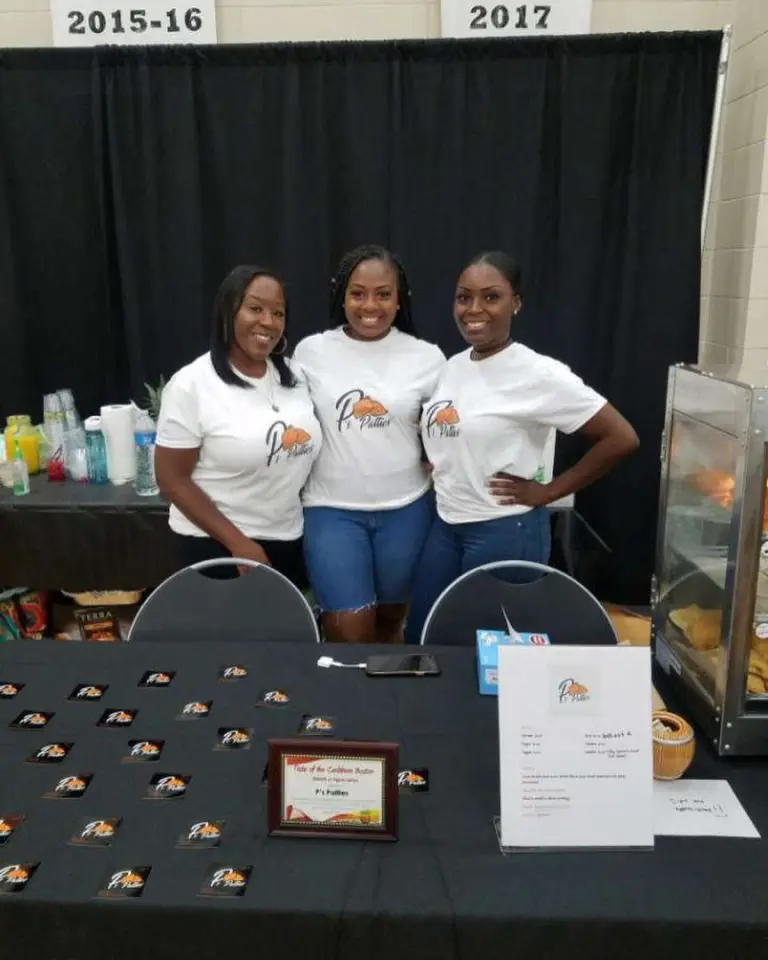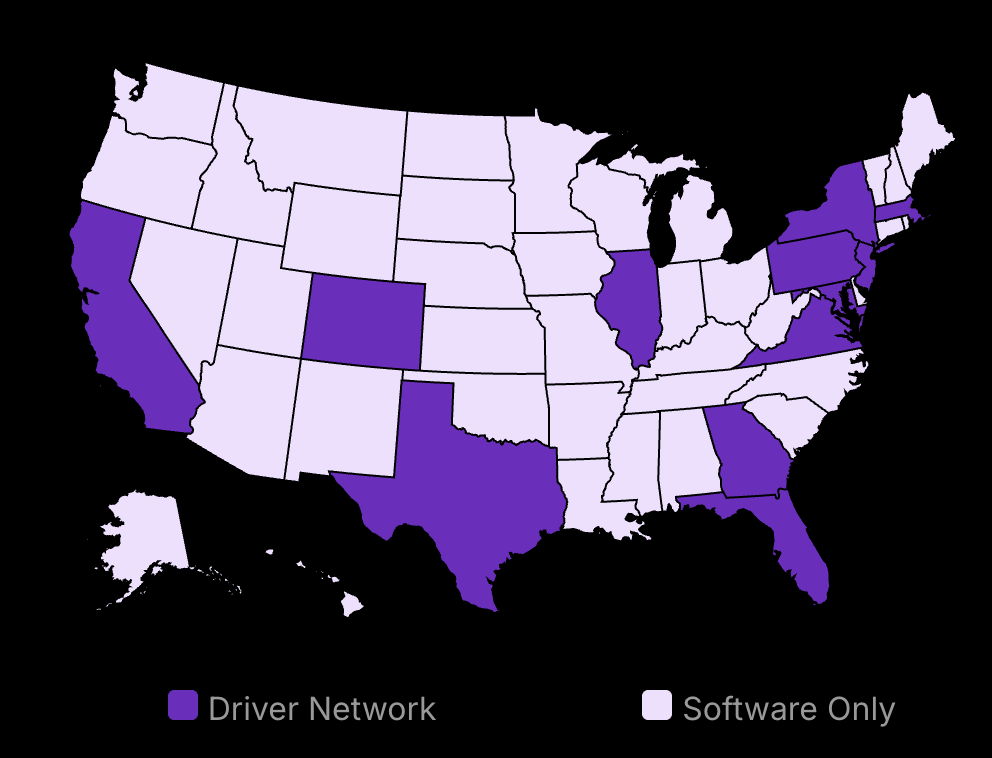You’ve perfected your menu. Your decor is Instagram-worthy. But there’s a hidden force shaping your diners’ eating experiences that you might be overlooking: the soundtrack to their meals.
Think about it. When was the moment the last time you truly listened to your restaurant’s playlist? Not just heard it, but listened?
In 2024, the right music isn’t just background noise—it’s a powerful tool that can transform a good meal into an unforgettable experience. It can make your diners linger longer, order that extra dessert, or rave about your place to their next group of friends.
But listen, here’s the kicker: most restaurant owners are getting it wrong. They’re either playing the same tired tracks on repeat or letting their teenage servers hijack the aux cord. Big mistake.
Imagine this: A couple walks into your restaurant. The moment they step inside, they’re enveloped by a carefully curated soundscape that perfectly complements your cuisine and ambiance. Without even realizing it, they’re already falling in love with your brand.
That’s the power of a top-notch restaurant playlist. And in this guide, we’re going to show you exactly how to harness it.
We’ve scoured the industry, talked to successful restaurateurs, and dug deep into the psychology of music to bring you the top 10 curated restaurant music playlists that will elevate your brand in 2024.
Ready to turn up the volume on your success? Let’s dive in.

27% higher customer satisfaction
Professional delivery features:
- Real-time GPS tracking
- Automated ETA updates
- Delivery confirmation photos
- 27% higher delivery satisfaction
Optimal Restaurant Playlist Strategy for Business Success
Align playlists with your restaurant’s brand and dining style.
Consider legal licensing essentials to avoid fines.
Choose music that boosts customer satisfaction and sales.
Aligning Playlist with Dining Style
Grasp the soul of your restaurant. Is it a cozy Italian spot, a classy French bistro, or a lively Mexican cantina? Each has its feel, drawing in different kinds of customers. So, you need to pick tunes that match these vibes. Research supports this with 79% of customers noticing if music fits the place. Not just for style but also for keeping people around, which can boost sales by 9.1%.
Music tempo and volume also shape your restaurant’s atmosphere. Fast-paced tunes might suit a casual lunch crowd, but soft melodies work better for dinner dates. Balancing these helps control the mood and dining pace. People linger 42% longer when music plays, so picking the right beats can turn tables faster or slow diners down, whichever suits your service goals.
Legal Considerations and Licensing
Playing music in a restaurant isn’t just about creating vibes; it’s also about staying legal. The wrong music without licenses can lead to hefty fines. Organizations like ASCAP and BMI offer licenses for restaurants. These ensure you have the right to play songs, keeping your establishment on the legal path.
Understanding licensing isn’t just about compliance; it’s about avoiding issues that can harm your business. Not having the right license can lead to disputes with music rights holders. Ensure you’re covered, so this doesn’t disrupt your operations. Not only does this protect from fines, but it also supports artists getting paid for their work.
Integrating Music Branding for Dining Environments
Music sets the dining pace; connects patrons emotionally; stands out from rivals.
Platforms like Spotify Business offer business-focused playlists.
Enhancing Customer Experience through Sound
The impact of music is profound. It’s more than just a background filler in dining spaces. Music affects how people feel during their meals and the speed at which they eat. Research shows that slow tunes can lead diners to linger longer, enjoying their time and often ordering more (Navin Ladha). Fast songs speed up everything, from bites to billing. The key is in planning music that echoes your brand’s vibe. As Allen Klevens notes, music branding creates a “customized ‘music vibe’” to boost customer experiences and sales.
Sound can create an emotional link with diners. The right mix can make patrons feel relaxed, upbeat, or even nostalgic. Songs should match the restaurant’s personality—aligning with the decor, cuisine, or even the time of day. This is not about what the restaurant owner prefers but what suits the guests best.
Differentiation is perhaps the biggest advantage of a well-crafted music strategy. Differentiation isn’t just about the playlist itself but how it interacts with the other senses—visuals, smells, tastes—to create a cohesive listening environment.
Popular Music Platforms for Restaurants
Choosing the right platform can make music integration seamless. With various options available, one must align their needs with what each service offers. For those looking to dive deeper into the nuances of tailoring soundscapes for dining settings, exploring expert insights on creating effective restaurant tunes can be invaluable. A detailed discussion on crafting the perfect atmosphere through sound is available in this comprehensive resource on restaurant soundscapes and ambiance. This guide offers practical tips and industry secrets that can enhance your playlist curation efforts and elevate the overall dining experience.
Spotify for Business
Spotify for Business is not your regular Spotify. It offers playlists molded for dining areas. The service is broadly used for its vast collection and user-friendly interface. While it’s easy to love, remember: that it’s built for general business, meaning it might not perfectly line up with niche restaurant themes right away.
Soundtrack Your Brand
If you want a tailored music experience, Soundtrack Your Brand could be the answer. It’s crafted for complex businesses like restaurants. Music managers can fine-tune playlists to align with specific environments or even time slots. The platform offers advanced options, but there’s a trade-off—the price is steeper than mainstream services.
Pandora for Business
Pandora for Business serves curated stations meant for various commercial settings. Since it’s radio-style, it might not offer the depth in channel customization needed by some businesses. However, it’s a dependable, fuss-free option for those who need a mix of variety and simplicity without breaking the bank.
Exploring 2024 Music Trends for Restaurants
Global influences are shaping dining music.
Technology allows for personalized playlists.
Seasonal music choices impact customer experience.
Current Trends and Predictions
In 2023, restaurants started moving away from traditional playlists packed with Western tunes. Instead, they have embraced a more world music approach, bringing in sounds from Africa, Latin America, and Asia. This shift reflects customers’ growing interest in diverse and authentic experiences. In January, many eateries in urban areas began experimenting with Afrobeat sounds, as social media buzzed with audiences sharing their dining experiences. By April, we saw more fusion dining places adding traditional Indian ragas and Middle Eastern instruments to their playlists. These changes not only revitalized the dining spaces but also attracted a new, culturally curious customer base.
Come summer, the trend only grew with Latin beats dominating many outdoor dining venues in warm climates. Restaurants hosted themed nights showcasing music from specific regions. As we head into 2024, expect this trend to deepen. Live performances and collaborations with local musicians who specialize in global sounds will likely become key marketing tactics. For the average restaurant owners seeking to surf this global music wave, consider integrating music events where DJs play multicultural sets or explore subscription services offering world music collections.
Minimalistic Beats vs. Rich Textures in Playlist Choices
A notable split has emerged in how restaurants approach music playlists: minimalistic sound versus rich, layered textures. Over the past year, minimalistic beats have found a home in many high-end dining establishments. Think soft piano or ambient electronica that never overshadows conversations. In February, several upscale eateries reported increased customer satisfaction by incorporating understated but sophisticated playlists. These songs quietly frame the dining experience, allowing diners’ focus to shift between the meal and their company.
Conversely, restaurants targeting younger or more vibrant crowds have leaned into rich textures, like those from jazz fusion or synth-heavy pop. Frequent updates in March and May from tech-forward bars and restaurants indicated that these styles resonated with patrons seeking dynamic environments. As we approach 2024, the choice between these playlists becomes more crucial. If you manage a quiet, fine-dining place, prioritize minimalistic sounds that enhance without distraction. Meanwhile, a buzzing, social venue should explore layered soundscapes to boost energy levels and support the atmosphere young diners crave.
Seasonal tunes have long been a staple, but in 2023, the approach grew more nuanced. Gone are the days when winter meant only Christmas jazz or summer only meant breezy rock. Restaurant owners began opting for music that aligns with seasonal ingredients and inspirations. In June, coastal areas led the way by choosing music reflecting the sea’s serenity or its lively beach scenes, aiming to match the seafood-heavy summer menus. Fall saw playlists filled with acoustic sets matching comfort food offerings, becoming a gathering medium for friends sharing seasonal dishes.
Looking at the future, curating music to mirror seasonal changes will likely expand beyond mere temperature cues. For example, if your restaurant is serving fresh autumn produce, folk tunes with an earthy feel can create harmony with the harvest. For those in regions with defined seasons, consider quarterly reviews of your playlists. This strategy aligns your restaurant’s sensory experiences, providing your customers with a cohesive dining environment that feels timely and thoughtful.
Technology and Personalization in Music Curation
This past year saw AI moving from hype to implementation in music curation. From June onwards, several leading restaurants began using AI tools to generate mood-based playlists in real time. These systems analyze ambient sound levels, customer profiles, and even staff feedback to match the music to the restaurant’s desired atmosphere throughout the day. Results showed that diners stayed longer when the music dynamically shifted to match the mood—whether it was upbeat during brunch or relaxing at dinner.
The coming year is set to continue to enhance this capability as AI providers are refining models to even predict busy versus slow periods. Restaurant owners should look into platforms that offer AI curation as part of their service portfolio. It’s not just about playing what’s popular or what suits your brand anymore. Instead, aim to deliver a unique experience per each dining group, making the meal memorable not just for the food but also for the ambiance.
Real-Time Adaptations Based on Crowd Analysis
Advancements in crowd analytics are revolutionizing music selection. By October 2023, several technology-driven restaurants reported success using software that gauges crowd reactions from body language to noise levels, adapting the restaurant music playlist in real-time. Such systems effectively make subtle adjustments, like switching to quieter moods when machinery registers decreased guest interaction levels. This could point toward guests needing a conversational break or simply enjoying the food more than the chatter.
As these tools become more available, investing in crowd analytics software will be pivotal for establishments with high foot traffic or diverse clientele. Systems that can interpret and adjust to your crowd can drastically enhance guest satisfaction by making them feel intuitively understood. Whether it’s dialing in the delicacy of classical strings during dessert or pumping up beats during happy hour, software-driven dynamics save guesswork and allow for precise, guest-centric music strategies.
Customer Interaction via Music Requests or Voting
Interactive music platforms are here to stay, as restaurants strive for personalized experiences. This past year, voting and request systems became popular with tech-savvy eateries. Patrons select songs on their phones from the restaurant’s pre-curated list or even propose new ones. By March, these interactive menus began showing not only increased engagement but also repeat visits. Diners felt they had a hand in crafting their experiences, linking the soundtrack with their shared moments.
As 2024 unfolds, expect enhancements like augmented reality interfaces, where diners see artist bios or song histories flashing through the table interface. If you’ve yet to adopt, experiment with opt-in systems that respect your overall musical direction while granting clients a voice. You can keep the playlist adaptable enough that it can handle diverse preferences without losing its core identity. It’s less about the song choice and the connection it fosters between the diner and your brand.
Crafting a Curated Musical Ambiance
Pick music tracks that match the brand.
Keep your playlist fresh and balanced.
Consider hiring a pro for more impact.
Building Playlist from Scratch
Creating a successful, restaurant music playlist is a strategic process. It requires understanding your brand, your customers, and how music affects the dining experience. Here are the steps:
Identify Your Music Tracks:
Start by noting the emotions and atmosphere your brand wants to project. If your restaurant has a relaxed vibe, choose slower tracks. For a lively setting, go for upbeat tunes.
Consider the genre that reflects your brand. A French bistro might benefit from classic chansons, while a modern café could lean towards indie music.
Explore platforms like Spotify, Apple Music, or Soundtrack Your Brand for track suggestions. Check out curated lists that align with your style.
Create Balance and Consistency:
Build a mix of familiar tunes and new music to keep guests engaged without overwhelming them.
Aim for a playlist length of at least 3-4 hours to avoid repetition during busy service times.
Balance energy levels throughout the playlist. Start with mellow songs, gradually increase tempo during peak dining hours, and then ease into softer tracks as the night winds down.
Regular Updates and Testing:
Stay current by updating your playlist regularly—ideally once a month—to include recent hits or remove overplayed tracks.
Test different playlists during various times of the day to see how they affect customer behavior and satisfaction. This helps you gauge which songs enhance the atmosphere.
Hiring Professional Curators
Outsourcing your playlist curation to professionals can be a game-changer. Here’s why it might be worth considering:
Benefits of Professional Curators:
Experts bring a fresh perspective and have the experience to align music more precisely with your brand. They understand how to weave a consistent sonic experience.
They can create specialty themes, like an Italian night soundtrack or music for brunch sessions that can elevate dining experiences.
Finding Skilled Professionals:
Use platforms like Upwork or Fiverr to find freelance curators who specialize in restaurant playlists. Look for those with positive reviews and portfolios featuring similar venues.
Discuss your brand’s needs and goals with potential curators to ensure they understand your vision.
Collaborating with Local Artists:
Forge partnerships with local musicians to showcase their work. It creates a unique and authentic atmosphere and helps support the community.
Invite artists to perform live sessions occasionally. Not only does this engage the local community, but it also adds a personal touch to your music selections.
Best Platforms for Monetizing Playlist Curation Skills
Earn by curating playlists on platforms like Spotify and Apple Music.
Develop a niche following and build a strong music curator profile.
Importance of networking and using social media to grow your audience.
Opportunities to Earn through Playlist Curation
Platforms like Spotify and Apple Music are leading the charge in giving playlist curators a chance to earn money for their skills. If you love music and can craft playlists that resonate, platforms such as SoundCampaign and SubmitHub offer chances to earn by reviewing tracks. Earnings per track review can range from $1 to $14 depending on your playlist’s quality and reach. Verified curators tend to earn more, partly because they engage more, thus they receive more song submissions.
1 in 4 people are considering curating playlists as a side hustle. Some curators build a niche following, offering exclusive playlists for a fee. It’s a bit like running a subscription service but for music. Key to this model is crafting playlists that continue to engage your niche audience.
The quality of your playlists can greatly impact your income. Curators should aim to connect with listeners rather than focus solely on paid placements, which could hurt your playlist’s integrity. Engage your audience by creating playlists around specific themes or music genres that have a loyal following. For example, a playlist centered around emerging indie folk artists can create a passionate listener base, encouraging regular shares and listens. This boosts the playlist’s profile and opens more monetization avenues.
Building Authority in the Music Curation Industry
To build authority as a playlist curator, you must demonstrate expertise and commitment to quality. Attending industry events and networking is vital. Events like music festivals often have panels or workshops focusing on the art of playlist curation. Meeting artists, managers, and other curators can lead to collaborations and exposure.
Creating a blog can also showcase your playlists, complete with write-ups on why each track is chosen. This not only improves your credibility but also helps in reaching a broader audience. Social media is another powerful tool. Engage consistently with your online community, share insights on new music, and collaborate with other curators for mutual benefits.
Social media platforms are indispensable for curators. Sites like Instagram, TikTok, and even Threads have vast communities interested in music discovery. Sharing snippets of your playlists, updates on new tracks, and behind-the-scenes insights will help draw in listeners, creating a devoted audience who look to your expertise and recommendations for new music.
Engagement is key. Regular interaction and opening up with your audience build trust and increase the possibility of passive income from listening and sharing.
Harmonizing Your Restaurant’s Success
The perfect playlist isn’t just background noise—it’s the heartbeat of your restaurant’s atmosphere. By carefully curating your menu and music, you’re not only enhancing the dining experience but also building a stronger brand identity. Remember, the right soundtrack can turn a meal into a memory. For a deeper dive into crafting the ideal auditory setting, explore expert insights on how tailored restaurant music influences mood and behavior, helping you create that perfect atmosphere. Check out this comprehensive guide on [restaurant music ambiance strategies](https://www.example.com/restaurant-music-how-to-create-the-perfect-atmosphere) for actionable tips and inspiration.
To master the art of creating the perfect atmosphere through sound, it’s essential to understand the nuances of restaurant music atmosphere. This resource provides valuable strategies for selecting tunes that resonate with your brand and elevate the guest experience, ensuring your restaurant stands out in a competitive market.
As you move forward, think of your playlist as a living entity. Let it evolve with your restaurant, adapting to seasons, trends, and customer feedback. You shouldn’t be afraid to experiment, but always stay true to your brand’s core values.
The power to transform your restaurant’s ambiance is now in your hands. Will you stick with safe, generic pop-up tunes, or will you craft a unique sonic identity that sets you apart? The choice is yours, and it could be the difference between a good restaurant and an unforgettable dining destination.
Your next step? Pick one strategy from this guide and implement it this week. You can start small, measure the impact, and watch as your curated soundscape becomes a talking point among your patrons. Your restaurant’s soundtrack awaits—what story will it tell? Incorporating live performances into your playlist strategy can further elevate the dining experience. A restaurant featuring live music brings unique energy that prerecorded tracks cannot match. It fosters a lively atmosphere, encourages longer stays, and can attract a wider clientele seeking entertainment alongside their meal. Exploring this option could transform your ambiance and boost your business in ways your playlist alone may not achieve.
If you’re considering taking your ambiance up a notch, live music is an exceptional option worth exploring. Hosting live performances can dramatically enhance the dining atmosphere, making it more engaging and memorable for your guests. Beyond just entertainment, a well-curated restaurant with live music setup can foster a vibrant environment that increases dwell time and encourages repeat visits. It’s an investment that not only elevates the mood but can significantly boost your business’s appeal and customer satisfaction.



























